Growing only cucumbers is boring. You might want to grow companions beside the cucumbers to make your garden look visually attractive. But before that, you must know what not to plant near the cucumber plants.
Cucumbers should not be planted near aromatic herbs, melons, potatoes, pumpkins, and tomatoes as they can stunt growth, spread diseases, and compete for nutrients and space. It is recommended to plant cucumbers with beans, corn, peas, and radishes for pest control and nutrient benefits.
In this article, we shall discuss these categories in detail, the plants that fall in these above categories, and the reason behind avoiding planting these plants near the cucumbers. So, let’s get right into it without further delay.
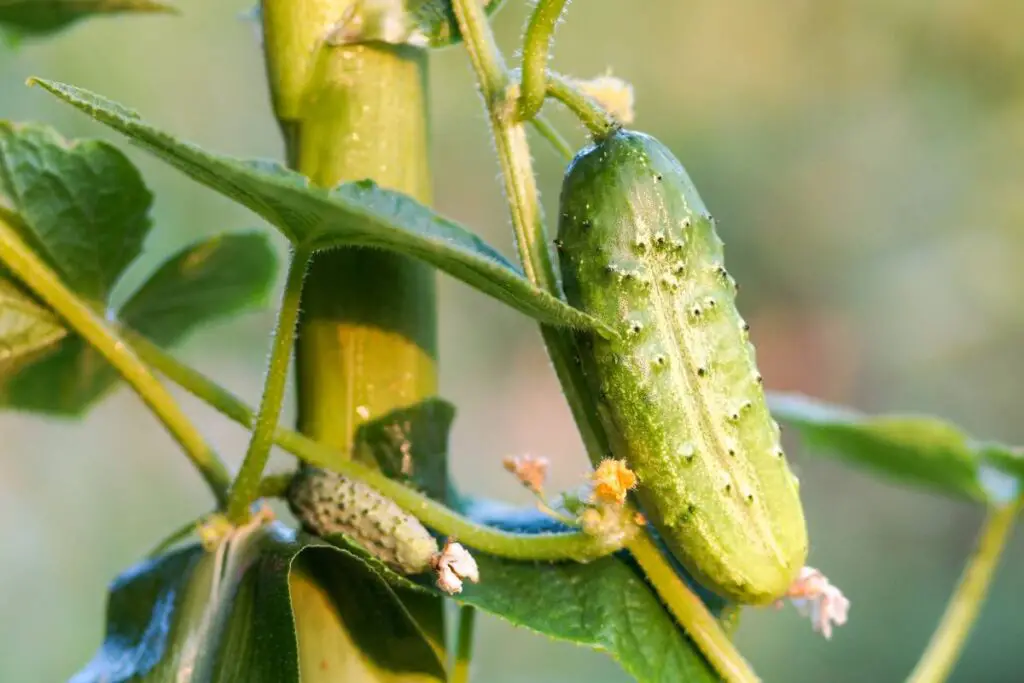
Avoid plants that need similar nutrients
This part is confusing.
Before, when I decided to plant some companions with cucumbers, I thought of growing some that share the same care and nutrients as the cucumber plants.
This way, I do not have to put any extra effort into caring for the plant or providing any extra nutrients to them.
But this is something that some gardeners don’t acknowledge.
Cucumbers are heavy feeders. When you grow plants that share the same care and nutrients as the cucumber plants, they start fighting for them.
As a result, both will have stunted growth and suffer from a lack of nutrition.
The plants that are heavy feeders and share the same nutrients as cucumbers are:
The other cucurbits like melons, squashes, and pumpkins
These belong to the same family as the cucumbers.
So, all of them share the exact requirements and nutrients and will also compete for the same if planted with cucumbers.
As a result, all of them will suffer stunted growth and low yields.
It is better to have separate beds and trellises for each of them.
Potatoes
Potatoes also share the same nutrients as cucumbers.
So, when planted with cucumbers, they will fight for nutrients and stunt the growth.
Sunflowers and corn
These are considered the best companions for cucumber plants because they share the same moisture, nutrients, and sunlight to thrive as cucumbers.
They will start competing with the cucumbers for moisture and nutrients when planted as companions.
Also, sunflowers can grow taller than cucumbers, overshadowing the cucumbers and fighting for sunlight.
The best option is to maintain proper distance between the cucumbers and these two plants, so they don’t disturb each other.
Tomatoes
Tomatoes also are considered good companions of the cucumber plants because they share the exact requirements, like sunlight, water, and soil.
So, gardeners can put less effort into tomatoes.
But since the resources are the same, they will fight for it.
Also, tomatoes can overshadow the cucumbers, and both may start fighting for sunlight.
So, keep them as far as you can from the cucumbers.
The best option is to grow them in separate garden beds.
Avoid plants that are susceptible to the same diseases
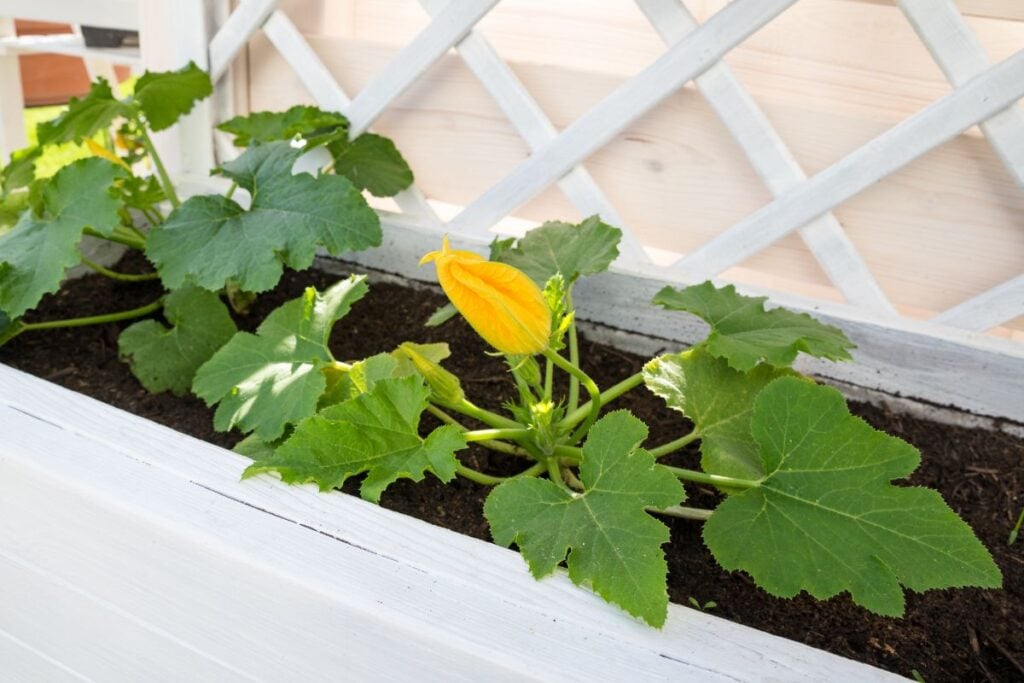
Again the other cucurbits and potatoes are to be avoided here.
Cucurbits
From cucurbits, belong:
- Squashes
- Melons
- Zucchini
- Pumpkins
Since these belong to the same family, they will share the same disease as the cucumbers.
If one gets affected, the other crops will easily get affected by the same disease.
Common diseases they will have are:
- Bacterial wilt
- Powdery and downy mildew
- Cucumber mosaic virus
- Anthracnose
Potatoes
Another plant to avoid is Potato.
One primary reason to keep cucumbers and potatoes away from each other the most is because the cucumbers can encourage potato blight if the conditions are right.
Keep them far away from each other and use separate beds.
Other ways to protect these plants from diseases are:
- Plant disease-resistant cucumber varieties
- Consider intercropping
- Use neem oil to prevent the disease from further occurring.
- Use fungicides or pesticides as needed.
Avoid plants that attract pests that feed on the cucumber plants
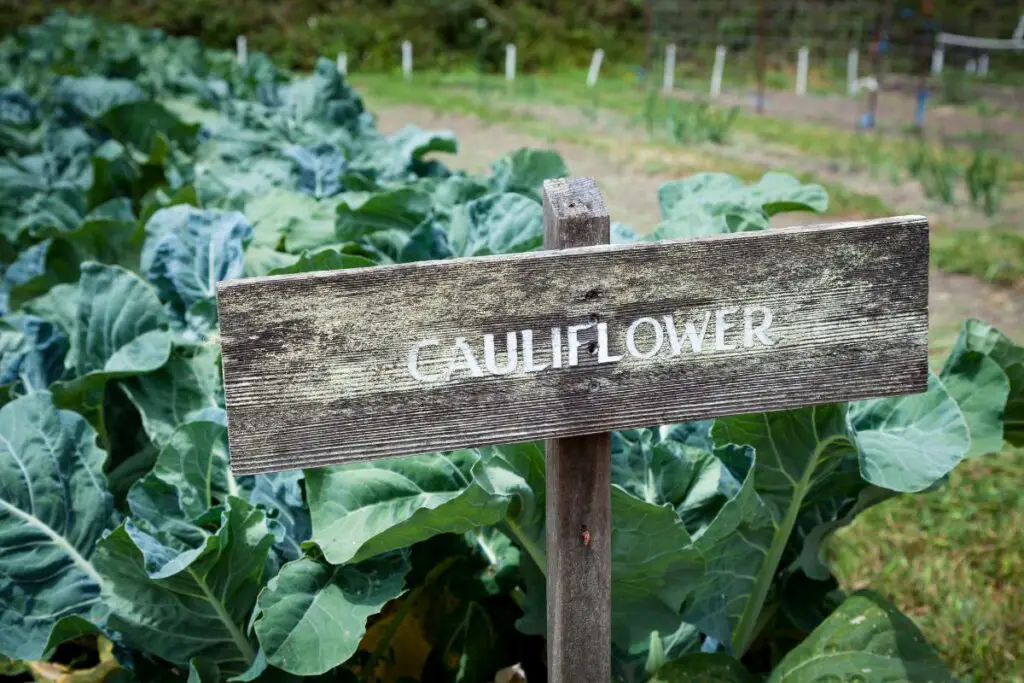
Many companion plants will attract pests that love to feed on cucumber plants.
Especially the crops from the cucurbit family attract cucumber-loving pests the most.
When they are neighbors, they will have a similar scent that will attract pests like aphids, whiteflies, and spider mites in the garden.
Over time, the pests will spread and damage all the crops.
The common crops that can attract pests that feed on the cucumbers are:
- Pumpkins
- Zucchini
- Melons
- Squashes
- Luffa
- Bottle gourd
These vegetables will attract the pests that love feeding on the cucumbers.
If ignored, all the crops will get infested over time.
Another crop is Brassica.
These also attract pests that love to feed on the cucumber plants and damage them.
Over time, it will lead to stunted growth and reduced yields.
So, keep them away to control the pests from spreading.
If you ever find any pests on the plants, water them with a garden hose to dislodge them and spray neem oil.
Cucumber beetles are one of the most common pests found in cucumber plants.
These get attracted to the cucumbers and other cucurbit varieties.
You can identify their infestation when you find the stems of your cucumber seedlings have been eaten off and the leaves are yellowing and wilting.
Over time, it can eat up all the plants and fruits and leave no cucumbers in your garden.
Some flowering plants and cucurbit members attract these beetles:
Looking for gardening supplies? We have tested 100's of products before recommending them to you guys. Check out our best pick below:
| Image | Gardening Supplies | Best Price? |
|---|---|---|
 Top
Top Top
Top | Raised Garden Bed Kit | Check On Amazon |
 | XLUX Soil Moisture Meter, Plant Water Monitor, Soil Hygrometer Sensor for Gardening, Farming, Indoor and Outdoor Plants, No Batteries Required | No Results |
 Top
Top Top
Top | 82 Pcs Garden Tools Set and Extra Succulent Tools Set | Check On Amazon |
 | Joeys Garden Expandable Garden Hose with 8 Function Hose Nozzle, Lightweight Anti-Kink Flexible Garden Hoses, Extra Strength Fabric with Double Latex Core, (50 FT, Black) | No Results |
 Top
Top Top
Top | Dual Chamber Compost Tumbler | Check On Amazon |
 Top
Top Top
Top | Sunnyglade Plant Stakes | Check On Amazon |
 Top
Top Top
Top | Organic Cold Pressed Neem Seed Oil | Check On Amazon |
 Top
Top Top
Top | Mighty Mint Gallon :-Insect and Pest Control Peppermint Oil | Check On Amazon |
 Top
Top Top
Top | Scotts DiseaseEx Lawn Fungicide | Check On Amazon |
 Top
Top Top
Top | Jacks Classic 20-20-20 All Purpose Fertilizer | Check On Amazon |
 Top
Top Top
Top | 30,000 Seeds Pollinator Attracting Wildflower Mixture | Check On Amazon |
 Top
Top Top
Top | Survival Vegetable Seeds Garden Kit-Over 16,000 Seeds | Check On Amazon |
Dandelions, hawthorns, and apples
The cucumber beetles get active during late May or early June.
Dandelions, Hawthorns, and Apples are some early flowering plants.
So, the cucumber beetles would love to feed on the flowers of these early flowering plants unless they get their host crops, which are cucumbers.
When you plant cucumbers as companions, these beetles will shift to these fruits and start feeding on them.
Other cucurbits
Other members of the cucurbit families, like squashes, zucchini, melons, pumpkins, and cantaloupes, also attract the cucumber beetles.
Since these belong to the same family, they have the same smell.
So, these beetles will love feeding on them.
You can also plant nasturtiums, alyssum, and herbs like catnip and calendula.
These will attract beneficial insects in your garden and eat up the cucumber beetles as their lunch.
Avoid plants that cast too much shade
The cucumber plants are sun-loving and need at least 6 to 8 hours of sunlight daily.
If you plant companions that grow long vines and cast too much shade over the cucumber plants, the cucurbits will not be able to grow and develop well.
So, avoid plants that can cast too much shade on the cucumbers.
The plants belonging to this category are:
Tomatoes
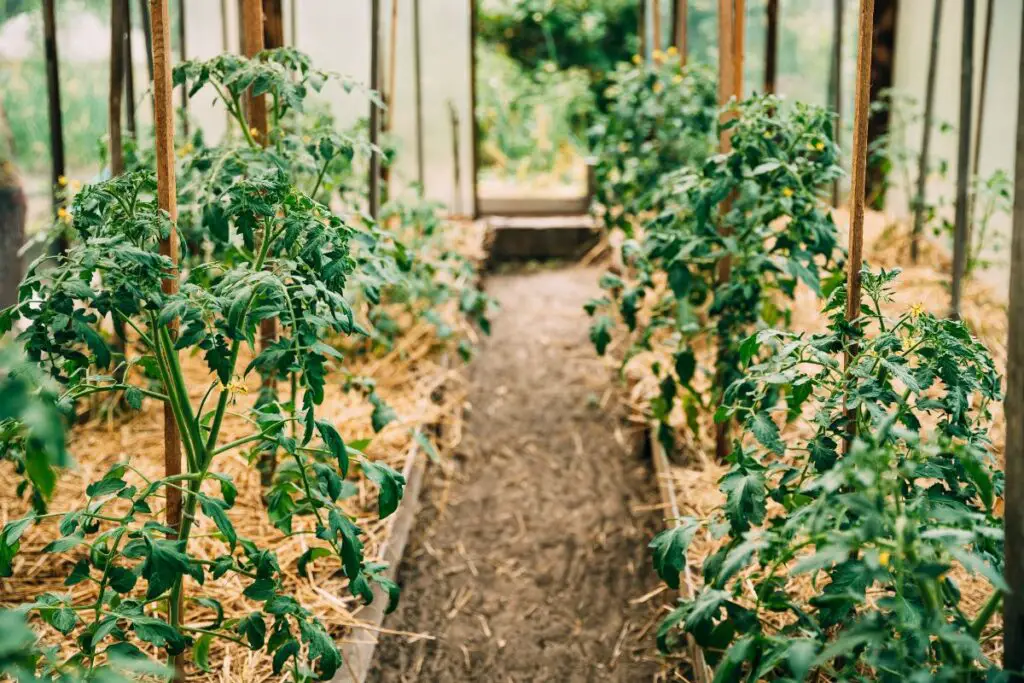
Both tomatoes and cucumbers share the exact requirements and nutrients, and they can repel common bugs of the other.
So, a lot of people suggest they grow together.
But, I won’t suggest that because one problem is that they can compete due to the exact requirements.
Another problem is that the tomatoes can grow faster when grown together and cast shade over the cucumber plants.
As a result, the plant can under-develop, and the fruits may become spindly and less juicy.
Pumpkins
Since cucumbers and pumpkins are from the same cucurbit family, both are vining plants.
Besides the disease problem I have shared earlier, there is another reason not to plant them together.
The vines grow 6 feet a day, and their large leaves can cast too much shadow over the cucumber vines and the fruits.
Squashes and melons
Again, both cucumbers and squashes belong to the same family.
Squashes can grow faster than cucumbers.
If you plant them together, the squashes will grow larger over time, casting a shadow over the cucumber plants.
As a result, the plant will grow poorly, and the fruits will stay under-developed or take a long time to prepare for harvest. The same is with the melons.
Also, melons are larger than cucumbers, and their vines can grow 8 to 10 feet long in trellis with cucumbers.
So, they will provide a lot of shadow to the cucumbers.
Pole beans
Pole beans do not belong to the cucurbit family.
But they can grow too tall and cast shadows over the cucumbers.
Many gardeners suggest growing bush beans and pole beans as companions of the cucumbers.
It is good because they can add valuable nutrients to the soil, which can be further helpful for the cucumbers.
But the shadow they provide is not suitable for the cucumber plants.
So, keep them at a distance so they don’t deprive the cucumbers of sunlight.
If you are growing them as companions, keep adequate distance between them so that one doesn’t cast a shadow over another and grow in a trellis.
Avoid plants that release allelopathic chemicals

It is something we often ignore because a lot of plants release allelopathic chemicals.
And we also grow some of them as cucumber companions.
For example, peas, onions, and garlic fall in the best companion category for cucumbers.
But they release allelopathic chemicals.
Both onion and garlic seeds release Diallyl disulfide or DADS, a critical allelopathic chemical.
These chemicals or oils can inhibit the growth and development of nearby plants.
Other allelopathic plants to avoid growing besides cucumbers are:
- Wheat and buckwheat
- French marigolds
- Sunflower
- Walnut
- Sorghum
- Brassicas
- Herbs like peppermint and basil
But there is a twist I discovered lately.
Cucumbers also release allelopathic chemicals.
So, if cucumber also releases the chemical, what happens if we plant other allelopathic plants near them?
After some research and a consultation with our local nursery store, I discovered the risk behind planting them together.
The chemical released from both plants can interact and make a synergistic effect.
So, the result of their interaction will lead to a more significant negative effect.
That is why it is better to keep these plants away from cucumbers.
Some good cucumber companions that release allelopathic chemicals, like:
- Corn
- Fresh Marigold
- Garlic mustard seed
- Sunflower
You can grow them as companions, but it is better to maintain a proper distance between them, around 3-4 feet, to stop the plants’ allelopathic oils from interacting.
Avoid plants with invasive roots
The cucumber plants have multiple lateral roots with one taproot.
The taproot is the primary root that grows vertically deep into the soil, and the lateral roots grow and spread horizontally, but they don’t grow too deep.
So, if you plant invasive roots around the cucumbers, both plants will fight for water and nutrients and grow stunted.
Moreover, these plants will tend to overcrowd the cucumber roots, restrict the root growth of the cucumber plants and stop them from developing and increasing their yields.
Over time, the roots can get damaged and lose the ability to accept moisture and nutrients.
So, if you are growing plants with invasive roots, give the cucumber plants enough space to grow their roots.
Invasive-rooted plants to avoid near cucumbers are:
Potatoes
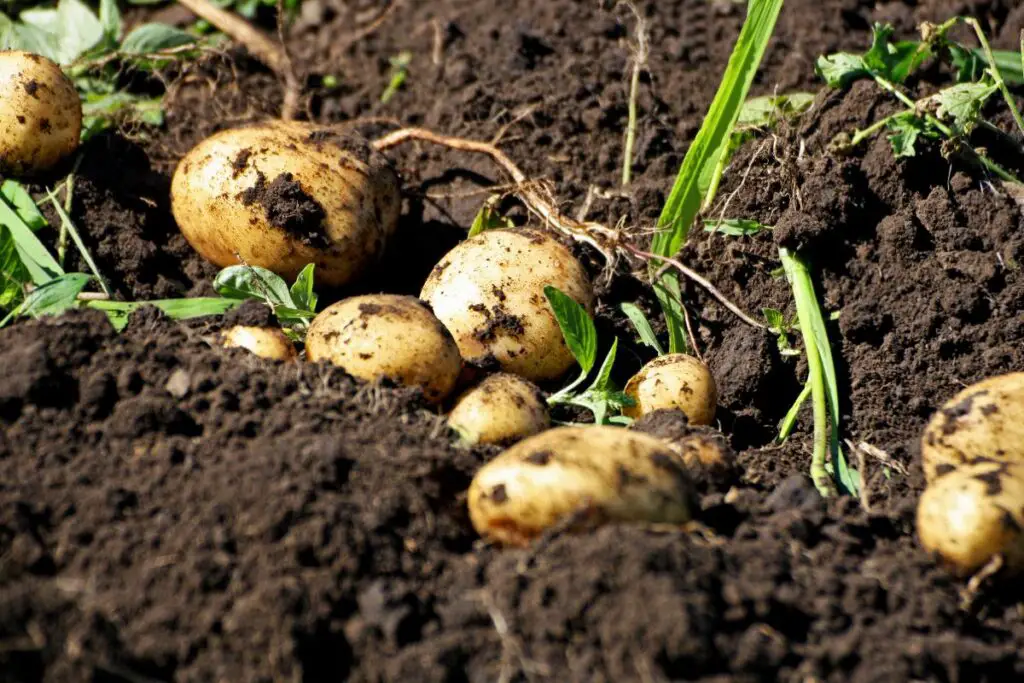
Potato is the first on the list.
Their roots are deep and invasive, taking up enough soil volume.
Growing close to cucumbers can overcrowd the cucumber roots and interrupt their root growth and development.
Also, when harvesting, you have to dig out the potatoes.
So, this is risky for the cucumber roots.
Mint
Mints may not have deep roots but can spread too much, around 1-2 feet.
So, planting them close to the cucumbers can lead to overcrowding and stunted growth.
Japanese Knotweed
The root can spread to several feet in depth and width, around 3 to 10 feet.
So, growing these plants near cucumbers results in weak root growth and low yields.
Horseradish
These can spread around 2-3 feet.
Though it is less than the Japanese Knotweed, you should still not plant it near the cucumbers.
These have deep invasive roots; growing them close to cucumber will hinder their root growth and development.
Avoid plants that are genetically related to cucumber plants
Of course, you must avoid the plants that are genetically related to the cucumber plants, i.e., the other cucurbit plants:
- Squashes
- Melons
- Pumpkins
- Cantaloupes
- Zucchini and others
Why? Here are the reasons:
- As I have said earlier, these will share the same type of requirements and nutrients as the cucumbers. So, if planted together, they will all fight for nutrients and lead to stunted growth.
- Since these are neighbors, they will have the same pests. When one gets affected, all the crops will get affected, too, within no time.
- Also, there are chances they can cross-pollinate. Though there is no such chance because the seeds are incompatible, you should not take any chances. If they cross-pollinate, you will lose the originality of your plant and receive a fruit with weird shapes and unknown traits.
So, it is better to keep them away from each other.
If you want them to grow, maintain separate garden beds and trellis.
Maintain proper distance between them and try to avoid natural pollination.
Other bad companions for cucumber plants
Except for those mentioned in the above topics, there are a few more plants that should not be planted near the cucumber plants:
Sage
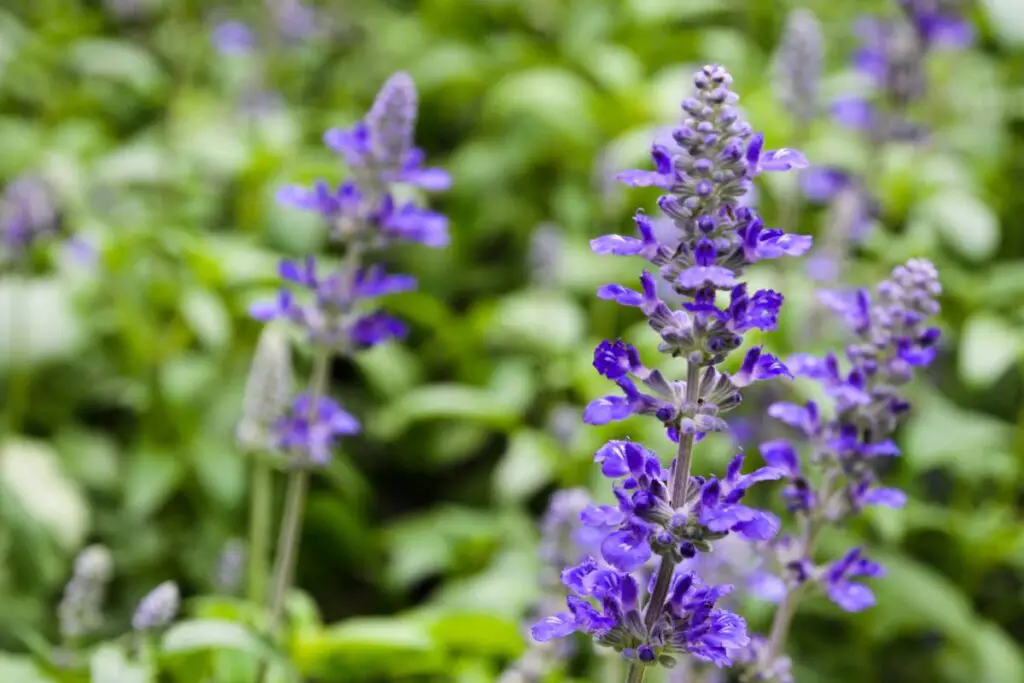
Sage is an intensely aromatic herb.
The smell of the sage is so strong that it can completely change the taste and smell of the cucumber plants.
One of my friends had tried growing them together, and it altered the smell of the cucumber.
It can be a gardening myth for some people, but only those who know the truth have faced it.
Basil
Basil is another herb to avoid.
Like Sage, Basil will also alter the taste and smell of the cucumbers with their strong herb smell.
Brassica
Brassica should not be grown as companions.
However, some people grow them together, but I don’t recommend it.
The cucumber plants prevent weed growth, which is excellent for the Brassicas.
But they can compete for nutrients and lead to stunted growth.
The plants falling in Brassica are cauliflower, broccoli, cabbage, kale, and other leafy vegetables.
Fennel
Fennel can serve as an inhibitor to most plants, and cucumbers are not an exception.
The fennel plant can inhibit the growth and development of cucumber plants by releasing some harmful chemicals.
So, the cucumbers will have stunted growth and low yield.
Strawberry
Never try growing strawberries and cucumbers together as companions.
The strawberry runners will overtake the cucumber plants and cover the maximum parts of your garden when they start focussing on propagation.
You can remove and transplant the baby strawberries and make extra room for the cucumbers, but that will take a lot of effort.
Ideal companions for cucumbers
- Growing companions have a lot of benefits, for example:
- You can give them the same care without any extra effort.
- Both will be beneficial for each other. For example, legumes can add nutrients to the soil, making cucumbers healthy.
- The companions will create a symbiotic relationship. For instance, cucumbers can provide shade to plants like lettuce that cannot tolerate hot sun.
- Companions can keep pests away from each other. For example, marigolds and nasturtiums can keep pests at bay.
Here are some great companions for the cucumbers:
Fruits and vegetables
- Beans – Be mindful because pole beans can cast shadows over the cucumbers. So, maintain a proper distance. Try bush beans instead.
- Carrots – They need only a tiny space in your garden and, thus, won’t mind cucumbers.
- Lettuce – These bolt in the hot summers. So, you can grow them between the cucumbers. Additionally, cucumbers will also protect them from direct sunlight.
- Peas – These legumes can add nutrients, especially nitrogen, to the soil, making the cucumbers healthy. Since cucumbers need less nitrogen, the amount it receives from these legumes will be enough.
Herbs
Herbs like basil and sage are not great companions for cucumber plants because of their strong smell.
But you can still choose herbs as companions. Try growing:
- Borage
- Calendula
- Dill
- Tansy
Flowers
A lot of flowers can also be companions. Not only will they give a unique look to your cucumber garden, but they will also keep pests at bay.
Some of them are:
- Marigolds
- Nasturtiums
- Sunflower
- Pansy
- Petunias
- Cosmos
There is a slight risk here.
As mentioned earlier, sunflowers and marigolds release allelopathic chemicals like cucumbers.
Planting them too close to each other can make the chemicals interact and have a more significant adverse effect on the plants.
Maintaining proper distance is vital if you must plant them as companions.
Tips for selecting the proper companions for cucumbers
Choosing the best cucumber companions depends on what you want to grow beside them.
Remember that you need to grow both the cucumber and the companion healthily.
Here are a few things you need to consider while choosing companions for cucumbers:
- If you have any plan for succession planting, research the seeds to plant and their harvest time before you plant them as companions. Make sure they have the harvest time and planting time similar to cucumbers.
- If you need the garden bed for the next crop round, avoid plants with a long growing season besides the cucumbers.
- There are a lot of plants to grow as companions. But even though many are on the companion list, only some fit as companions. For example, beans are considered a good companion as they share the same care, but Pole beans can shadow cucumbers. So, think before you choose.
- If you are considering a crop rotation, choose those that do not affect the cucumbers or don’t get affected by cucumbers.
Final thoughts
When you decide on growing companions for your cucumber plants, you must also know what not to plant for your cucumber’s sake. All are not good companions. There are a lot of plants that share the exact requirements and nutrients of the cucumbers. Planting them close to each other will make them fight for nutrients, leading to stunted growth and less yields.
Some can cast a shadow over the cucumbers, some have invasive roots that can hinder the cucumber root growth, and some produce chemicals that inhibit root growth. Do not plant genetically related plants, like, squashes, melons, pumpkins, cantaloupes, and other cucurbits.
Not only will these compete for nutrients, but they will also attract the same pests and diseases and infest all the plants within no time. No matter which one you choose, make sure that the companions and the cucumbers benefit each other and don’t interrupt each other’s growth and development.
What can you grow under a cucumber trellis?
Under the cucumber trellis, you can grow many plants, especially those that need protection from direct sunlight. For example, lettuce is a great plant to grow under the cucumber trellis.
Is it better to grow cucumber on the ground or trellis?
It depends on how much you care for the cucumber plants. However, in most cases, the cucumbers thrive best and yield more when grown in the trellis because these plants stay above the plant and rarely get attacked by pests or diseases.
Reference: Cucumber Wikipedia
